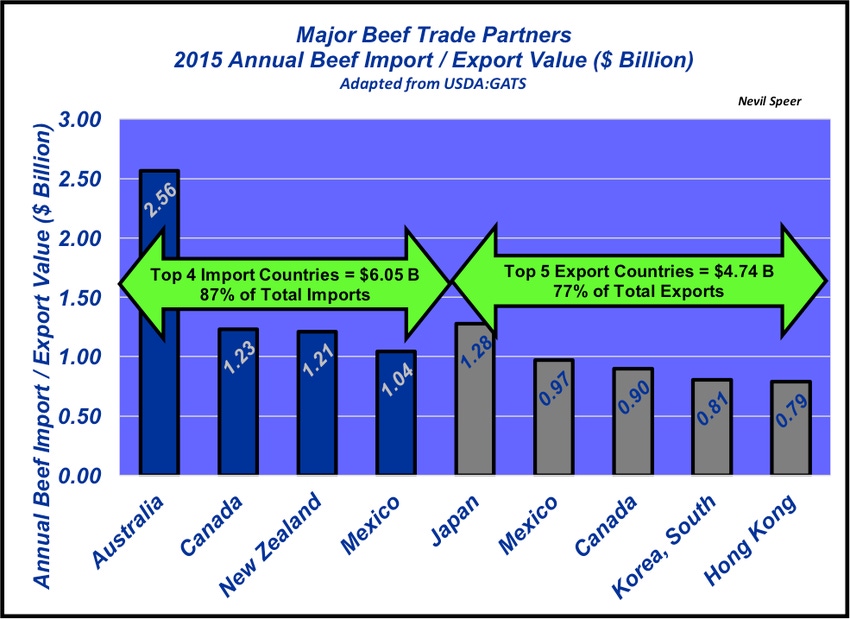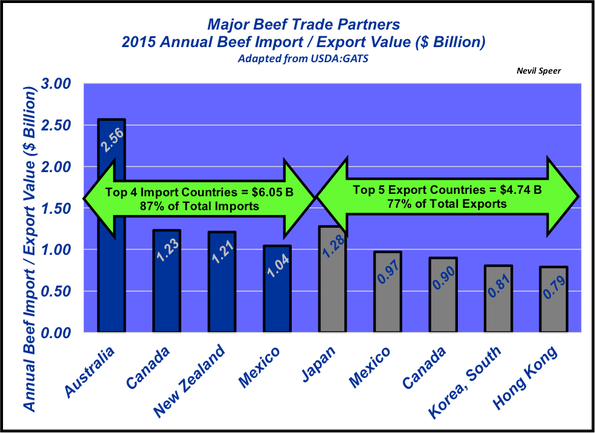Can you guess which countries send the most beef to the U.S.? Do you know which countries buy the most U.S. beef? Here’s the breakdown.
August 10, 2016

This past week brought a flurry of responses to USDA’s announcement regarding our new trade status with Brazil. Brazil currently ships cooked and canned beef to the U.S. However, the new agreement allows for fresh product to be exported from Brazil for the first time since the country was classified with foot and mouth disease (FMD) by USDA.
Brazil will be operating under the Tariff Rate Quota (TRQ) outside of country-specific trade agreements (e.g. Canada and Mexico). USDA explains the system as follows:
The two-tiered system allows a specified volume of imports per calendar year at a lower rate of duty and assigns a higher tariff rate to volumes above the quota. Two types of U.S. TRQs were established through WTO negotiations:
Country-specific TRQs: created for Australia, Japan, New Zealand, Uruguay and Argentina;
Other Countries TRQ: provides preferential-duty access for other countries that are eligible to ship beef to the United States.
The other-countries annual quota, under which Brazil will be operating, is established at 64.8 million tons – access under that quota is on a first-come, first-served basis for countries that do not have a specific quota agreement with the U.S. Beef imported into the U.S. above that amount is posted with a heavy tariff. The 2015 quota-fill rate stood at 68%. So the actual amount of Brazilian beef that will be imported into the U.S. is unknown, but analysts don’t think it will be burdensome.

Meanwhile, last week’s Industry At A Glance dealt with the overall importance of exports, specifically, the role exports play in terms of managing total per-capita supply within the U.S.
On both sides, it draws attention to the importance of international trade for the U.S. beef industry. To that end, this week’s illustration highlights the industry’s major trade partners – and the economic impact of each country, respectively.
How do you perceive the various influences on international trade? Conversely, what’s your perception of international trade on the current state of the cattle market? Beside any potential introduction of FMD into the U.S. (another topic for another day), what’s your perspective of the economic impacts of trade – on both sides – to the beef industry? Leave your thoughts in the comments section below.
You might also like:
Do small cows make more money?
13 utility tractors that will boost efficiency
How to get more value from your cull cows
14 thoughts to help get those heifers bred
Photo Tour: World's largest vertically integrated cattle operation
About the Author(s)
You May Also Like





